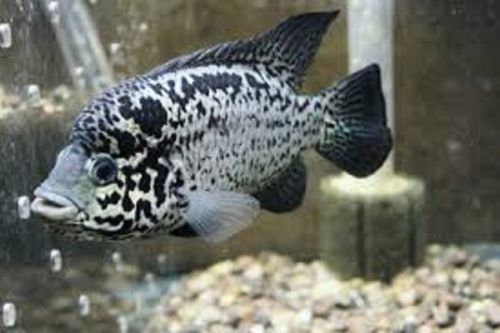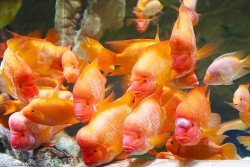Cuban Cichlids for Sale from breeders and hobbyists
 Cuban Cichlids, scientifically classified as Nandopsis tetracanthus, are a captivating freshwater fish species that originate from the Caribbean island of Cuba. These cichlids have gained recognition among aquarists for their unique characteristics, vibrant colors, and engaging behavior. These are tough Central American cichlids!
Cuban Cichlids, scientifically classified as Nandopsis tetracanthus, are a captivating freshwater fish species that originate from the Caribbean island of Cuba. These cichlids have gained recognition among aquarists for their unique characteristics, vibrant colors, and engaging behavior. These are tough Central American cichlids!In this journey, we embark on an exploration of Cuban Cichlids, unveiling their intriguing traits, care requirements, and the allure that makes them a prized choice for dedicated fish enthusiasts.
Common Names
Cuban Cichlids are often referred to by their scientific name, Nandopsis tetracanthus, but they may also be known as the Cuban Gar Cichlid due to their elongated, gar-like appearance.Etymology
The genus name "Nandopsis" likely originates from a combination of Greek words, with "Nandos" meaning "a kind of fish" and "opsis" meaning "appearance." The species name "tetracanthus" refers to their four spines, which are characteristic of their dorsal fin.Classification
Cuban Cichlids belong to the Cichlidae family, a diverse group of fishes known for their adaptability and distinct behaviors. Within this family, Nandopsis is a genus known for its unique species, including N. tetracanthus.Distribution
Nandopsis tetracanthus is endemic to Cuba, inhabiting various water bodies across the island. However, they have also been introduced to Florida, where they have established feral populations in some freshwater ecosystems.Habitat
In their native habitat, Cuban Cichlids can be found in a range of aquatic environments, from slow-moving rivers and streams to ponds and lakes with vegetation and rocky substrates.Maximum Standard Length
Cuban Cichlids typically reach a maximum standard length of around 8 to 10 inches (20 to 25 cm) when mature, although some individuals may grow slightly larger.Aquarium Size
To provide ample space for Cuban Cichlids, a spacious aquarium of at least 55 gallons or more is recommended. This allows for swimming room and the inclusion of appropriate hiding spots and decorations.Maintenance
Maintaining Cuban Cichlids in captivity involves providing a well-structured tank with hiding places, rocks, and caves to mimic their natural habitat. Regular water changes and efficient filtration are essential for their well-being.Water Conditions
Cuban Cichlids thrive in slightly acidic to neutral water conditions, with a pH range of 6.0 to 7.5 and a temperature range between 75-82°F (24-28°C).Diet
Nandopsis tetracanthus are omnivorous and feed on a varied diet that includes high-quality pellets, live or frozen foods like small fish, shrimp, and earthworms. Offering a diverse diet enhances their health and vitality.Behaviour and Compatibility
Cuban Cichlids exhibit territorial behavior, particularly during the breeding season. They are best kept in a species-specific aquarium or with robust tankmates that can withstand their behavior.Sexual Dimorphism
Sexual dimorphism in Cuban Cichlids can be challenging to discern based on physical characteristics alone. Males may exhibit slightly brighter colors or larger size, but these differences can be subtle.
Cuban Cichlid Pair Video
References
Cuban Cichlid, Biajaca - AC Tropical FishCuban Cichlid (Nandopsis tetracanthus) - The Free Freshwater
Nandopsis tetracanthus - The Cichlid Room Companion






